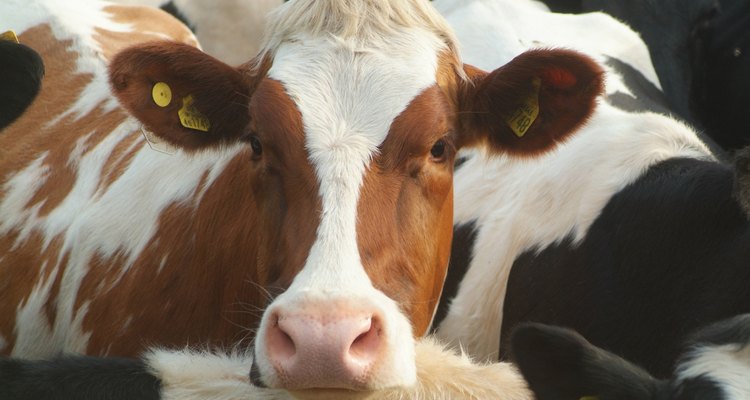
Ingram Publishing/Ingram Publishing/Getty Images
All cuts of beef are not created equal. They differ from each other in fat content and texture, as well as cooking times and methods. The arm roast tends to be tough and less flavorful than the rump roast. In fact, the magazine “Cooks Illustrated” describes the texture of an arm roast as chewy and grainy. For cuts of beef more tender and flavorful than the rump roast, try top sirloin steaks or a top round roast.
Part of the Cow
For butchering purposes, a cow has eight sections. The arm roast and the rump roast come from opposite ends of the cow. The arm roast comes from the chuck portion -- the shoulder -- which is the front-most part of the cow, directly behind the neck. The rump roast comes from the round -- the rear-most part of the cow -- including the butt and thigh.
Cooking Methods
The sinewy muscles of an arm roast need slow, moist cooking methods like stewing or braising to render them tender and juicy. Marinating an arm roast helps tenderize the meat and add flavor. Braise a 2-by-2-by-4-inch boneless arm roast for 1 ½ to 2 ½ hours and a 1-inch to 1 ½-inch rump roast for 2 to 3 hours. Use a dry-heat cooking method to cook the leaner and more tender rump roast, but braising and stewing also suit this cut of beef.
Calories, Protein, Cholesterol and Sodium
The same 3-ounce serving of arm roast or rump roast provides you with different amounts of calories, protein, cholesterol and sodium, according to the Texas Beef Council. The arm roast has 184 calories, 28 grams of protein, 86 milligrams of cholesterol and 56 milligrams of sodium. The rump roast has 178 calories, 27 grams of protein, 82 milligrams of cholesterol and 43 milligrams of sodium.
Vitamins and Minerals
A serving of arm roast provides you with 49 percent of your daily value, or DV, of zinc; 48 percent of your DV of vitamin B-12; 32 percent of your DV of selenium; 23 percent of your DV of phosphorus; 18 percent of your DV of iron, 16 percent of your DV of niacin, 15 percent of your DV of riboflavin and 14 percent of your DV of vitamin B-6. The same portion of rump roast contains 31 percent of your DV of zinc; 35 percent of your DV of vitamin B-12; 34 percent of your DV of selenium; 23 percent of your DV of phosphorus; 16 percent of your DV of iron, 17 percent of your DV of niacin, 13 percent of your DV of riboflavin and 15 percent of your DV of vitamin B-6.
Related Articles

How to Cook a 15-Pound Rib Roast
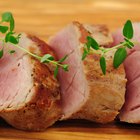
How to Cook Beef Tenderloin With the ...
How to Cook a Lamb Square Cut Shoulder

How to Cook Arm Steak

How to Cook a Choice New York Roast
How to Cook Buffalo Fillet

How to Cook a Tender Top Sirloin Roast
How to Cook a Choice Chuck Roast
How to Prepare a Beef Chuck Blade Roast

How to Make Roast Beef for Sandwiches

How to Cook Top Round Roast With ...
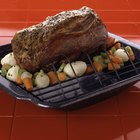
How to Marinate Beef Roast to Make ...
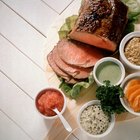
How to Sear a Roast Beef

How to Convection Roast a Boston Butt
The Best Way to Cook Bison Steak
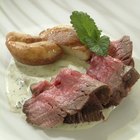
How to Cook a Four-Pound Sirloin Tip ...

How to Bake a Pork Loin Center Half
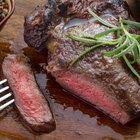
How to Cook a Seamed Eye Round
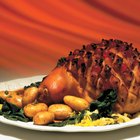
How Do I Cook Boneless Pork Leg Roast ...
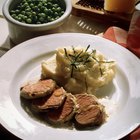
How to Make a Juicy Pork Tenderloin
Writer Bio
Victoria Weinblatt began writing articles in 2007, contributing to The Huffington Post and other websites. She is a certified yoga instructor, group fitness instructor and massage therapist. Weinblatt received her B.S. in natural resources from Michigan State University and an M.Ed. from Shenandoah University.
Photo Credits
Ingram Publishing/Ingram Publishing/Getty Images